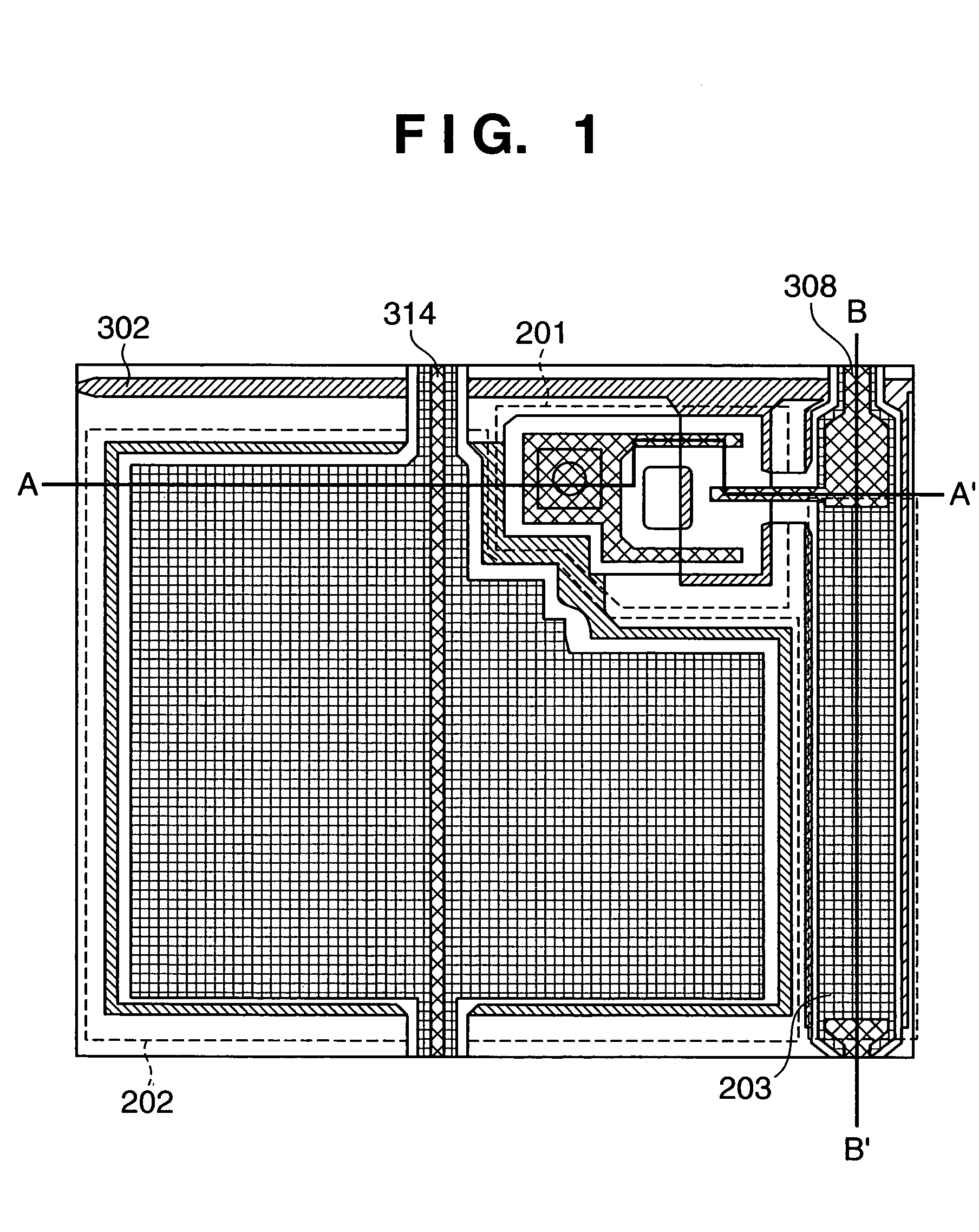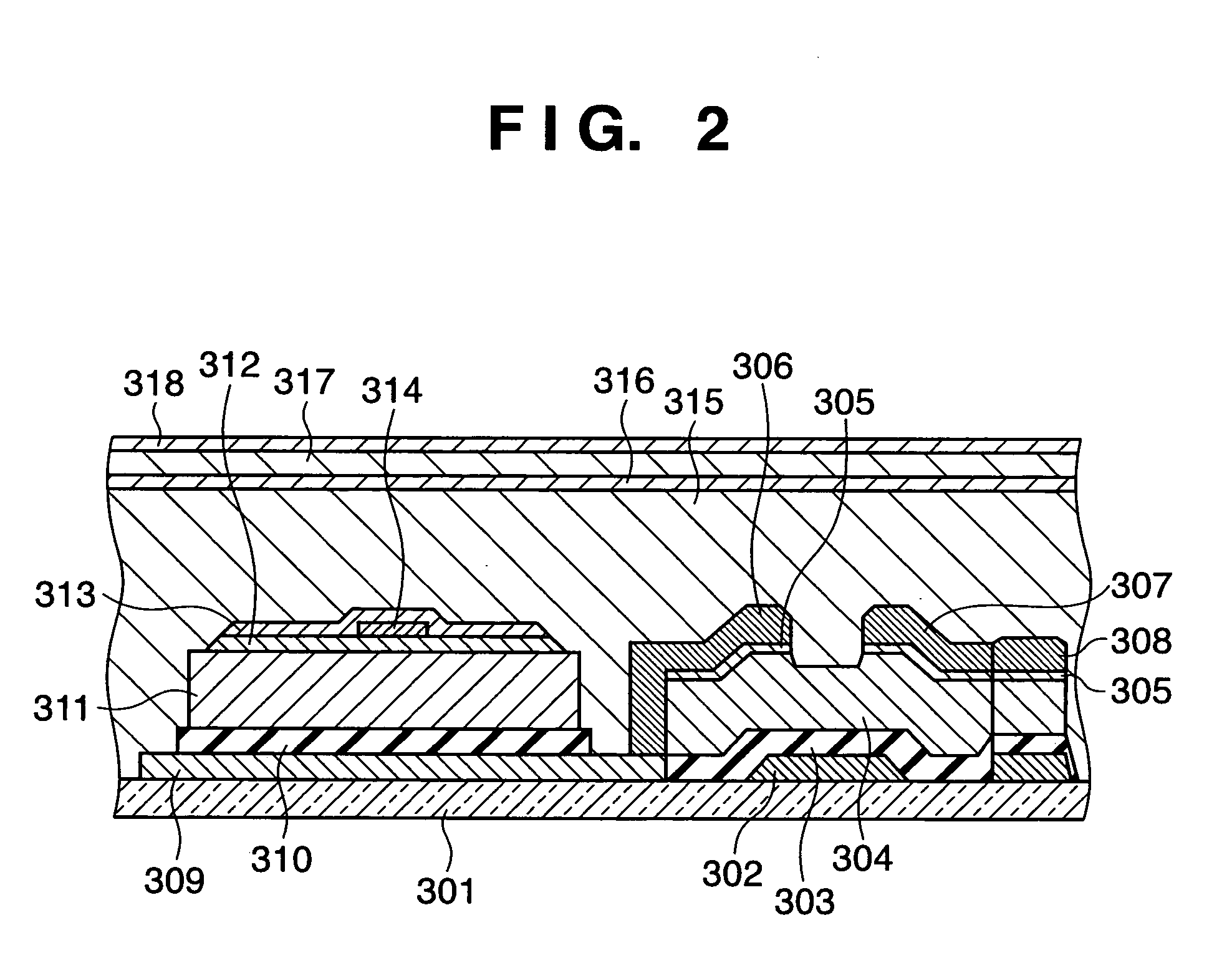Photoelectric conversion apparatus, manufacturing method therefor, and X-ray imaging apparatus
- Summary
- Abstract
- Description
- Claims
- Application Information
AI Technical Summary
Benefits of technology
Problems solved by technology
Method used
Image
Examples
first embodiment
(First Embodiment)
[0044]The first embodiment of the present invention will be described.
[0045]FIG. 1 is a view showing an example of one pixel of the two-dimensional sensor used in a digital X-ray imaging apparatus according to the first embodiment of the present invention. For the sake of convenience, FIG. 1 shows no phosphor or the like.
[0046]Each pixel of the two-dimensional sensor has a MIS (Metal-Insulator-Semiconductor) type photoelectric conversion unit 202 placed as a photoelectric conversion element which converts visible light emitted from a phosphor into an electrical signal and stores it, and a TFT (Thin-Film-Transistor) 201 placed as a transfer device for transferring the electric charge stored in the MIS type photoelectric conversion unit 202.
[0047]A gate electrode 302, sensor bias line 314, and signal line 308 are connected to the above pixel. The gate electrode 302 drives the TFT 201. The sensor bias line 314 applies a voltage required for photoelectric conversion or...
second embodiment
(Second Embodiment)
[0116]The second embodiment of the present invention will be described next. This embodiment mainly differs from the first embodiment in the arrangement of a two-dimensional sensor. The same reference numerals as in FIGS. 1 to 8 in the first embodiment denote the same parts in the second embodiment, and hence a detailed description thereof will be omitted.
[0117]FIG. 9 shows the schematic arrangement of a photoelectric conversion apparatus according to this embodiment. More specifically, FIG. 9 shows the photoelectric conversion apparatus in which pluralities of signal amplification circuits and vertical driving circuits are connected to a sensor substrate on which 2,500×2,500 pixels are arranged.
[0118]A total of 20 signal amplification circuits 801 shown in FIG. 7 are connected to the sensor substrate, 10 circuits each on the upper and lower sides in FIG. 9. One signal amplification circuit 801 is connected to 250 signal lines Sig. As shown in FIG. 9, phototimer d...
third embodiment
(Third Embodiment)
[0129]The third embodiment of the present invention will be described next. Note that the first and third embodiments differ in the detailed arrangement of a photoelectric conversion element. More specifically, the first embodiment uses a MIS type photoelectric conversion unit as a photoelectric conversion element, whereas the third embodiment uses a PIN type photoelectric conversion unit as a photoelectric conversion element. The same reference numerals as in FIGS. 1 to 8 in the first embodiment denote the same parts in the third embodiment, and hence a detailed description thereof will be omitted.
[0130]FIG. 10 is a sectional view of a pixel formed from a combination of a PIN type photoelectric conversion unit as a photoelectric conversion element and a TFT as a transfer device.
[0131]Like the TFT 201 in the first embodiment described above, the TFT is constituted by a gate electrode 1102 made of chromium, aluminum, or an aluminum alloy and formed on a glass substr...
PUM
 Login to View More
Login to View More Abstract
Description
Claims
Application Information
 Login to View More
Login to View More - R&D
- Intellectual Property
- Life Sciences
- Materials
- Tech Scout
- Unparalleled Data Quality
- Higher Quality Content
- 60% Fewer Hallucinations
Browse by: Latest US Patents, China's latest patents, Technical Efficacy Thesaurus, Application Domain, Technology Topic, Popular Technical Reports.
© 2025 PatSnap. All rights reserved.Legal|Privacy policy|Modern Slavery Act Transparency Statement|Sitemap|About US| Contact US: help@patsnap.com



